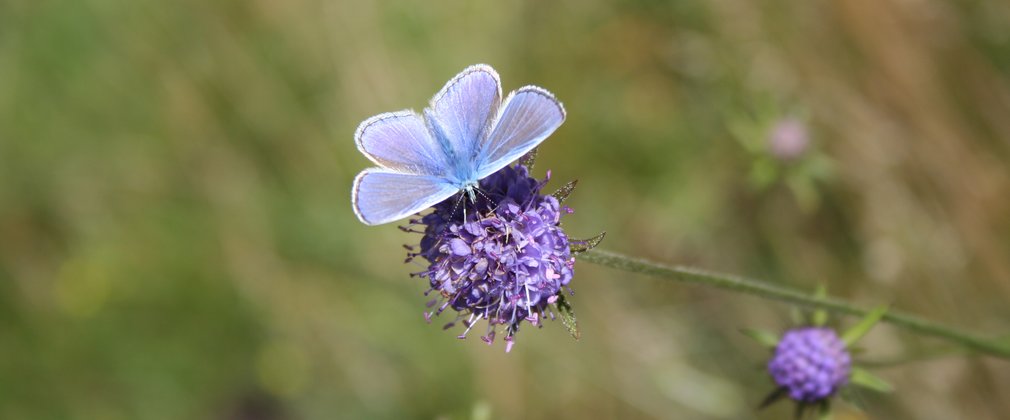
Wildlife at Bedgebury
Wildlife at Bedgebury National Pinetum and Forest
Managed in harmony with the botanical collection, Bedgebury has a variety of habitats full of our native fauna and flora. Our nutrient-poor but varied acid soils do not produce the picturesque flower meadows much beloved by photographers, but instead the more subtle species-rich heath and acid grassland. Both of these habitats are now rare in the South East of England - so we value them highly. One reason why 40% of the Pinetum is always left un-planted is so that we can maintain and enhance this important resource. Add to this our streams, ponds and lakes and you will see why Bedgebury is a haven for a wide variety of animals, birds, insects and plants.
Whatever time of year you visit the pinetum, there is always something living and generally going about its daily life. Sedges dominate the sward in spring with bright tufts of pollen and are followed through the year by many different grasses. The grassland provides a habitat for much of the wildlife that you may not notice walking by. Settle down to a picnic under the shade of the canopy above and listen out for the soundtrack of crickets and grasshoppers backed by the chirp of small birds and the evocative call of the cuckoo. Sitting amongst the heather in late summer and early autumn you can watch bees go about their daily harvest and if you stay later on in the summer evenings you may be lucky enough to spot some of our bat population.
Winter can be a hard time for our native bird life, but places like Bedgebury offer a refuge for many. The evergreen foliage of the large conifers offers essential shelter to many species. Flocks of long tailed tits (Aegithalos caudatus), gold crests (Regulus regulus) and blue tits (Parus caeruleus) can often be seen hunting for aphids, spiders and other delicacies amongst the dense foliage.
If you are lucky you will see our specialities. The tiny, often-heard but elusive firecrest (Regulusignicapillus) inhabit the tall specimens of Leyland cypress. In the early 1990s the UK experienced an influx of crossbills (Loxia curvirostra) seeking food after a poor coning year on the continent. Most returned home after the winter, but some found Bedgebury suitable to their needs and stayed. Bedgebury is also a well known winter roost for our largest finch the Hawfinch (Coccothraustes coccothraustes) . This stunning bird attracts many ‘twitchers’ from all over the country.
At Bedgebury you’ll find:
• Over 20 species of dragonfly and damselfly, including the delicate common blue (Enallagma cyathigerum) and large red (Pyrrhosoma nymphula). Through spring, summer and autumn you can find common and ruddy darters (Sympetrum striolatum & S. sanguineum).
• More than 900 species of fungi, all of which were recorded in the Kent Field Club book “The Fungi of Bedgebury”.
• Plants such as the edible pignut (Conopodium majus), the musty smelling heath bedstraw (Galium saxatile), lousewort (Pedicularis sylvatica), and colonies of the common spotted orchid (Dactylorhiza fuchsia).
• Meadow brown (Maniola jurtina) and common blue (Polyommatus icarus) butterflies fluttering through the grass sward.
• The flowering of the devils bit scabious (Succisa pratensis) - which is a real treat in late summer!
• Birds and large animals that make their home here. We are a refuge for the hawfinch (Coccothraustes coccothraustes) in the winter and other birds arrive in the spring to breed. The turtle dove (Streptopelia turtur) with its soft purring song, the ghostly nightjar (Caprimulgus europaeus) and the cuckoo (Cuculus canorus) are also frequent visitors.
• Our resident reptiles and amphibians, such as newts, common toads (Bufo bufo) and grass snakes (Natrix natrix).
• More than 900 species of fungi, all of which were recorded in the Kent Field Club book “The Fungi of Bedgebury”.
• Plants such as the edible pignut (Conopodium majus), the musty smelling heath bedstraw (Galium saxatile), lousewort (Pedicularis sylvatica), and colonies of the common spotted orchid (Dactylorhiza fuchsia).
• Meadow brown (Maniola jurtina) and common blue (Polyommatus icarus) butterflies fluttering through the grass sward.
• The flowering of the devils bit scabious (Succisa pratensis) - which is a real treat in late summer!
• Birds and large animals that make their home here. We are a refuge for the hawfinch (Coccothraustes coccothraustes) in the winter and other birds arrive in the spring to breed. The turtle dove (Streptopelia turtur) with its soft purring song, the ghostly nightjar (Caprimulgus europaeus) and the cuckoo (Cuculus canorus) are also frequent visitors.
• Our resident reptiles and amphibians, such as newts, common toads (Bufo bufo) and grass snakes (Natrix natrix).
